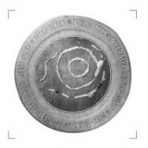The study of the written sources concerning the areas investigated by the nEU-Med project is moving forward with a close analysis of the charters preserved in the State Archive of Siena and, more specifically, in the archival collections: Bichi Borghesi, Città di Massa and S. Agostino. These three collections host the charters of three important abbeys, which had great interests in coastal and inner Maremma, among the rivers Cornia, Pecora and Bruna. They are the imperial abbeys of S. Antimo in Val di Starcia, S. Pietro of Monteverdi and S. Bartolomeo of Sestinga. The abbey of S. Bartolomeo was founded by a powerful family of Lucca at the beginning of the eleventh century and immediately entrusted to the imperial protection.
The first two collections preserve only part of the charters of the abbeys, because their archives have been dispersed (S. Antimo in Bichi Borghesi; Monteverdi in Città di Massa). Nevertheless, the limited amount of charters at our disposal is very useful for the reconstruction of the land and power structures of this territory. For Sestinga, instead, the archival documentation merged into S. Agostino is conspicuous and coherent. The total amount of charters to be analysed for the period prior to the thirteenth century is a little more than one hundred. There is no complete and scientific edition of these charters. The studies on the early- and high-medieval Maremma, usually take the moves from the short and not always accurate summaries written by Alessandro Lisini at the beginning of the last century.
First of all, we proceeded to the acquisition of the photographic reproduction of these charters. We have then analysed such charters taking into account not only their main texts, but also the annotations written on the verso of each of them. There were many instances in which it was possible to integrate and correct Lisini’s reading. Furthermore, not infrequent were the examples of erroneous dating of these charters that we have been able to amend. The creation of a database and its interrogation is allowing us to reconstruct a geography of the places of power in the region, where the acts were issued or the rents were collected; the process of land enrichment of the aforementioned abbeys; the circuit of redistribution of fiscal estates, especially during imperial campaigns; the transformations produced by the so-called “feudal revolution”, which had a great impact on the typologies of charters as much as on the material appearance of the institutions which produced them.
Finally, we announce the finding in Florence, within the former Cabinet of the School of Palaeography, of a charter dating back to the end of the tenth century which has been substantially ignored by historiography. This charter, concerning the abbey of S. Pietro of Monteverdi, had been only reported by Antonio Falce a little less than a century ago. The analysis of this document has proved very useful for understanding the history of the castle of Campetroso


